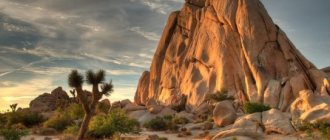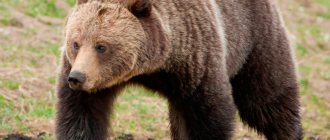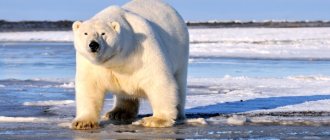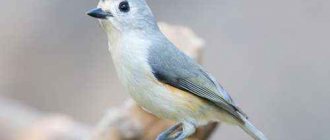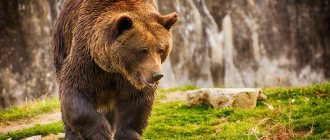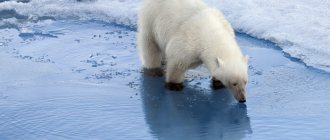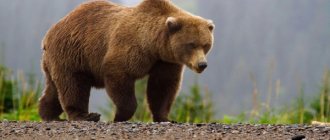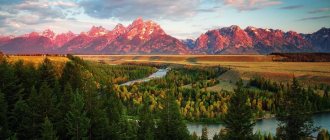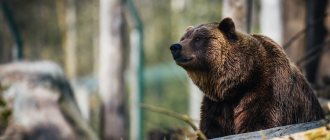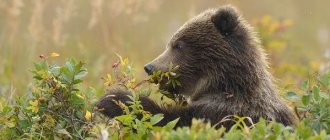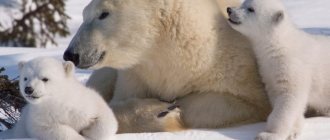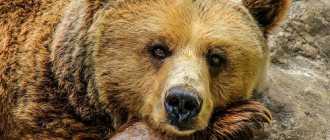Baribal (black bear) in Ontario, Canada. (Image credit: mlorenzphotography/Getty Images)
The American black bear (Ursus americanus), often referred to simply as black bears, is the most common species of bear in North America. They live in northern Mexico, the USA and Canada. Baribals are smaller than brown bears (Ursus arctos) and polar bears (Ursus maritimus), making them the smallest of the three bear species in North America.
Baribals are excellent climbers and use their curved claws to scale trees and access food such as nuts and honeycomb. On land, they are powerful runners and can reach speeds of up to 56 km/h, according to the US National Park Service (NPS). ()
As their name suggests, black bears are usually black in color, but their fur can also be brown, cinnamon, or even white. This color change causes them to sometimes be mistaken for brown bears, especially where the two species' ranges overlap in the northwestern United States and Canada. ()
Description
The baribal generally has a black coat, especially in eastern North America. The muzzle is often light in color, contrasting with the animal's darker coat, and there may also be a white patch on the chest. Western populations tend to have lighter coats. Some groups of black bears from coastal British Columbia and Alaska are creamy white or bluish gray. The total body length of males ranges from 140 to 200 cm, and that of females from 120 to 160 cm. The length of the tail ranges from 8 to 14 cm. Males weigh from 47 to 409 kg, and females from 39 to 236 kg. The distance between the fangs is approximately 4.5-5 cm.
Black bears differ from brown bears (Ursus Arctos) in having a longer body, slightly pubescent ears and a slight convexity in the shoulders.
Where do baribals live?
Baribals live in North America - from northern Mexico and the USA to northern Canada. According to the International Bear Research and Management Association (IBA), they are found in 32 US states and all Canadian provinces except Prince Edward Island. Baribals are typically found in coniferous and deciduous forests, but their broad diet allows them to exploit other types of habitat, including open alpine areas, according to the National Wildlife Federation. ()
Brown bears live in the western region of the baribal range, including western Canada and US states such as Alaska, Washington and Idaho. Baribals also live so far north that their range overlaps with that of polar bears along Canada's northern coastlines such as Ontario and Quebec, according to the International Union for Conservation of Nature (IUCN). ()
Baribal with freshly caught salmon in his mouth in Alaska. (Image credit: Shutterstock)
Habitat
The baribal's habitat is characterized by relatively inaccessible terrain, dense vegetation and abundant food. In the southwest, its territory is limited to overgrown, mountainous areas, and its altitude varies between 400-3000 meters above sea level. Black bear habitat consists primarily of chaparral and woodland. Bears sometimes move out of the chaparral into more open areas and feed on spiny pear-shaped cacti.
Adaptation to wooded areas and dense vegetation in this species may have originally been driven by the fact that baribals evolved alongside larger, more aggressive bear species, such as the extinct short-faced bear and the still living grizzly bear, which monopolized open habitats. Despite this, baribals are found in many wild, unspoiled places and rural areas, they can adapt to survive in some suburban areas as long as they have easy access to a food source.
Color
Baribal, a description of which can be found in special literature about wild animals, as a rule, has black, less often black-brown, fur. The only exception is the end of the muzzle, painted light yellow. At the same time, even in one litter, cubs of chocolate-brown and bluish-black color can be born.
Typically, a brown tint is characteristic of young animals. Baribal is a bear that is significantly smaller in size than its brown counterpart, but this species is not inferior to it in the variety of colors. In addition to black or black-brown ones, light brown representatives of the species are found on the west coast of the United States, the Alaskan variety is distinguished by silver-blue fur (glacier bears), animals living on Gribbel Island have a white fur coat. But all varieties have a characteristic feature - the light yellow end of the muzzle.
Reproduction
Males meet females during her estrus period. The home ranges of males overlap with the territories of several females. The mating season reaches its maximum from June to mid-July. Estrus in females lasts throughout the entire season, until the moment of mating. As a rule, females give birth every year, but sometimes they take a break for 3 or 4 years. Pregnancy lasts about 220 days, including delayed implantation. Fertilized eggs do not implant into the uterus until the fall, and embryonic development occurs only during the last 10 weeks of pregnancy.
The birth of cubs occurs in January and February, usually during the wintering of the female. The number of cubs in a litter varies between 1 and 5. At birth, the baribala weighs between 200 and 450 grams. They are born defenseless and blind. The cubs remain in the den with their mother throughout the winter and feed on her milk. In the spring, when the family leaves the den, the cubs weigh from 2 to 5 kg. They are weaned from their mother's milk at 6-8 months, but remain with their mother until they reach about 17 months of age. Female black bears care for the younger generation and teach them life skills throughout their life together. Males are not directly involved in raising their offspring, but do it indirectly - they protect them from all kinds of threats.
Females reach sexual maturity between 2 and 9 years of age, and can have offspring within a year of maturation. Males reach sexual maturity at 3 to 4 years of age, but continue to grow until they are 10 to 12 years old, at which age they are large enough to dominate young bears without a fight.
Hibernation
In the past, it was believed that the baribal did not go into deep hibernation, but after much observation and research, the theory was disproved.
Baribal can sleep for a month without supplying the body with food or drink, without urinating or defecating. This indicates a clearly slow metabolism, due to which this predator can fall into winter lethargy without any damage to health. It can significantly slow down your metabolism during times of poor nutrition and cold temperatures. Today he is considered one of the most adapted bears for hibernation.
Creates (or finds) dens in October and November. This function is usually performed by empty tree trunks, caves, and shallow depressions in the ground. Before this period, the baribal gains an additional 14 kg of fat. Hibernation lasts 3-5 months, during which the heart rate drops from 40-50 beats per minute to 8 beats. Having woken up, the bear leaves the den and wanders around the territory for about 2 weeks to speed up its metabolism and adapt to active functioning.
Nutrition
Throughout their range, black bears feed on grass, forbs, berries and fruits. However, eating habits vary depending on the environment. Only a small part of a bear's diet consists of animals, insects and beetles. Most animals consume baribala in the form of carrion. These bears are not active predators and feed on vertebrates only when possible.
Baribals require foods that are high in carbohydrates and low in protein and fat. Consequently, they usually prefer foods high in protein or fat, so they tend to consume human food. Bears consuming protein-rich foods show significant weight gain and increased fertility. In the spring, after black bears emerge from their dens, they face food shortages. As a rule, baribals lose weight during this period and continue to exist due to the fat accumulated before wintering. They eat any juicy and protein-rich food in quantities sufficient to maintain body weight. In the summer, animals eat a variety of berries and fruits. Summer is typically a period of abundant and varied food for black bears, allowing them to recover from the energetic caloric deficits of winter and spring. Baribals accumulate large reserves of fat in the fall, thanks to fruits, nuts and acorns.
Character, natural enemies
There are 20 different sounds the Baribal makes, including growls and snorts when he's angry, and squeaks and purrs when he's satisfied.
It is highly territorial and not very social, but when there is a large amount of food available in a particular area, baribals live in less connected hierarchical structures. Dominant males occupy the areas richest in food. Marks territory by rubbing and biting the bark. The size of the plot depends on the region.
Baribals are very good swimmers; they do it not only for food, but also for pleasure. They lead a fairly arboreal lifestyle, similar to the Himalayan bear. Climbing skills decline with age and weight gain. They are active at any time of the day, but are usually active after dark.
Apart from occasional encounters with grizzlies and wolves, the baribal does not have to worry about the dangers of aggressive behavior or the predatory disposition of other animals. Bear cubs are in the worst position, becoming easy prey for cougars, lynx, wolves, coyotes, brown bears or adult bears.
Behavior
Black bears are generally crepuscular animals, although breeding and feeding may change this pattern. For rest, baribals choose areas in the forest covered with leaves. Basically, these are solitary animals with the exception of the female and her cubs. In areas where food sources are clustered, large numbers of bears congregate and form social hierarchies.
Black bears have high levels of intelligence, exhibit a heightened degree of curiosity, and have exploration skills. Baribals tend to be shy and fearful animals around humans, but they exhibit a wider range of intraspecific and interspecific behavior than originally thought. Black bears have unusual navigational abilities that are poorly understood.
Home range
Home ranges are established by adult females during the summer. Males select territories that are large enough to feed well and overlap the ranges of several females.
Kermode bears, or ghost bears
Kermode's polar bear, or ghost bear, on Princess Royal Island in Canada. (Image credit: Natalie Fobes/Getty Images)
Kermode bears (Ursus americanus kermodei) are a subspecies of baribal in British Columbia, Canada that are sometimes white. Kermode's polar bears are also known as ghost bears, although they are part of the Kermode population and are not a distinct subspecies. The highest concentration of ghost bears is on Gribbell Island off the north coast of British Columbia, where one-third of the black bears on the island are born white, according to the National Wildlife Federation. ()
Ghost bears' white fur is caused by a mutation in the mc1r gene. According to the National Wildlife Federation, the gene is recessive—meaning a cub will only be white if both of its parents carry the gene. If only one parent carries the recessive gene, the cub will have a normal black coat. ()
A 2009 study published in the Biological Journal of the Linnean Society found that white black bears are better at catching salmon than regular black bears during the day. This may be because it is more difficult for fish to see polar bears overhead, as light fur blends better with the bright sky background than black fur. ()
Economic significance for humans
Positive
Humans actively hunted baribals for the value of the trophy and various body parts, including skins for clothing or carpets, as well as meat and fat. Most states and provinces in North America where these bears live have regulated hunting. It is estimated that about 30,000 black bears are killed annually. A small number of skins go to market, as there is not much demand for them and such trade is illegal.
Medical research into the metabolic pathways of black bears is used to understand treatments for kidney failure, gallstones, severe burns and other diseases.
Negative
Black bears may raid livestock, although these losses are minor. Bears sometimes damage corn fields, berry fields and apiaries. They seriously injure and sometimes even kill people living in RVs and the travelers who feed them. However, the dangers associated with attacks by black bears are sometimes overestimated; approximately 36 people have died as a result of encounters with black bears in the 20th century. People who live or visit areas where black bears are present should be aware of appropriate precautions to avoid encounters with them.
Are baribals dangerous?
Bears usually do not harm people and often avoid encounters with people. However, bears sometimes attack to protect their cubs or food, and in very rare cases kill people to eat them. Since 1900, 78 people have been killed by baribals in the U.S. and Canada, compared with 84 killed by brown bears, according to the Florida Museum of Natural History. A 2011 study published in the Journal of Wildlife Management found that the majority of fatal baribal attacks are caused by predatory male baribals. Predatory attacks occur when a bear attacks a person it believes to be prey. (, )
The NPS recommends that people stay away from and not annoy wild bears. If attacked by a baribal, the victim must fight back. Playing dead will not fool baribals (although it may work with brown bears), so if the victim cannot escape to a car or other safe place, he should use whatever objects are available and hit the bear in the face and nose. ()
Appearance and features
Photo: Animal black bear
The American bear differs from its larger relatives in its average size.
- body length - 170 centimeters;
- tail - 8-12 centimeters;
- height at the withers – up to 100 centimeters.
Among black bears there are both small individuals, not exceeding 60 kg, and huge bears weighing about 300 kg. The average weight is usually 150 kilograms. The significant variation in size is explained by the fact that in nature there are 16 subspecies that differ in weight. Males are usually significantly larger than females, by about one third.
A distinctive feature is the pointed muzzle, widely spaced, fairly large ears. The paws are high, with short feet and fairly long nails, specially designed for climbing trees. The difference from its closest brother, namely the grizzly bear, is the absence of a shoulder hump and low withers.
The American bear's fur is short and shiny, completely black. It often happens that up to two years of age, baribal cubs have a light color, which then changes to black. Usually just below the throat you can see a light spot of white, beige or light brown.
However, scientists have also found other colors. One of the most common will be brown. Sometimes it happens that in one litter there can be both black and brown cubs. More rare colors are blue-black and white-yellow, which is not a manifestation of albinism.
Life expectancy can reach 25 years, but about 90% of bears do not reach 2 years. The cause of death is usually hunters or poachers.
